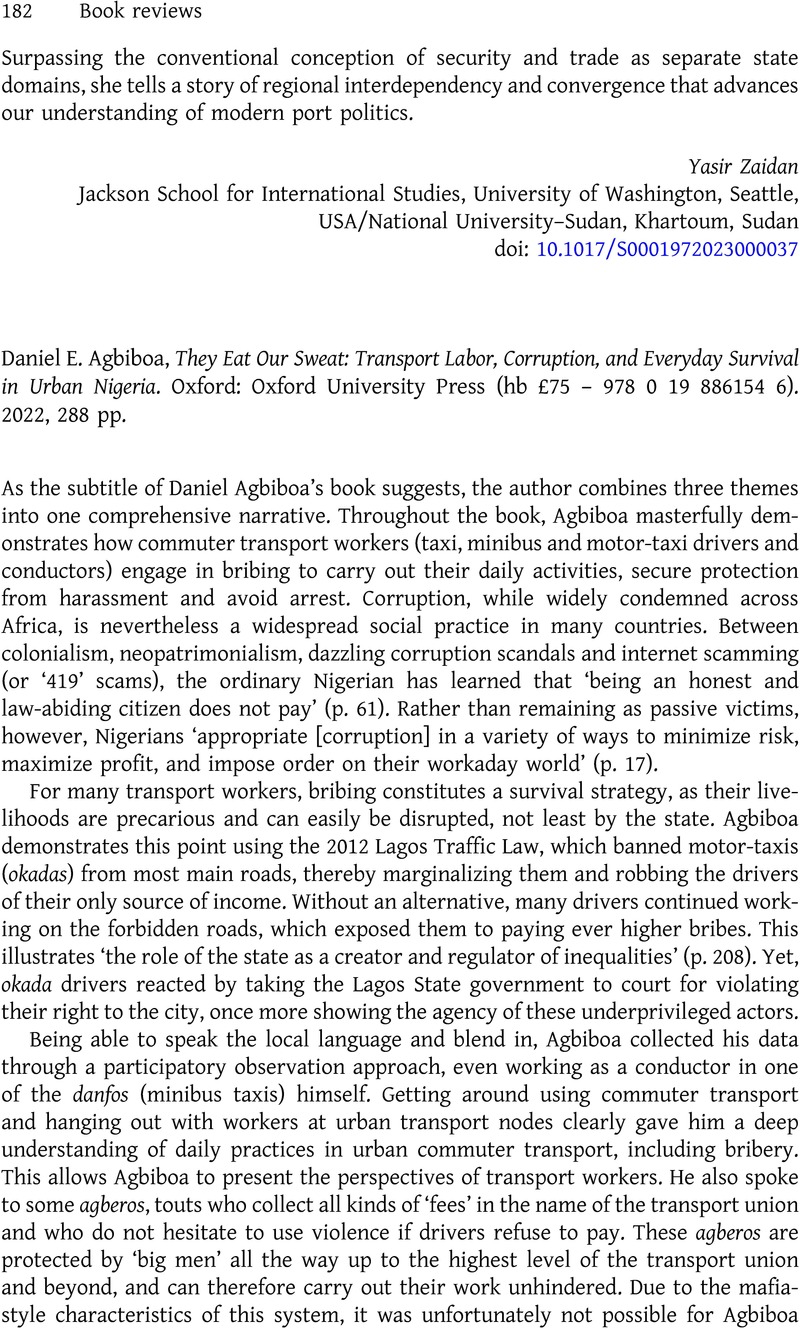No CrossRef data available.
Published online by Cambridge University Press: 30 March 2023

1 Erik Bähre (2014) ‘A trickle-up economy: mutuality, freedom and violence in Cape Town’s taxi associations’, Africa 84 (4): 576–94; Tom Goodfellow (2017) ‘“Double capture” and de-democratisation: interest group politics and Uganda’s “transport mafia”’, Journal of Development Studies 53 (10): 1568–83.